I thought it would be good to digitise an essay Michael Rothenstein wrote and illustrated in 1948 about ‘Sports Gardens’ or what we would now call an Arcade. It shows he was looking at his contemporary items as artworks, pre Pop-art.
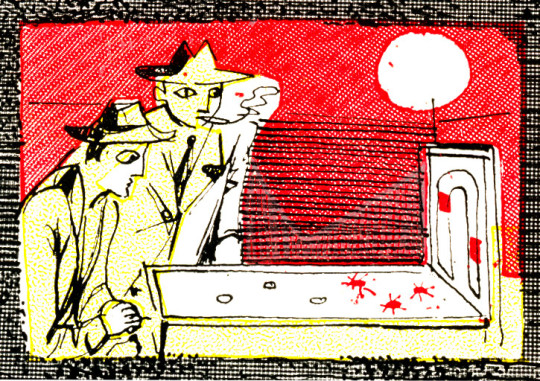

Sports Gardens have a tough, adolescent, slightly underhand air; a compound of chain-store and small town fairground. They are of course an urban version of the country fair an indoor version compressed into restricted floor space completely mechanised and with some of the high spirits ironed out.
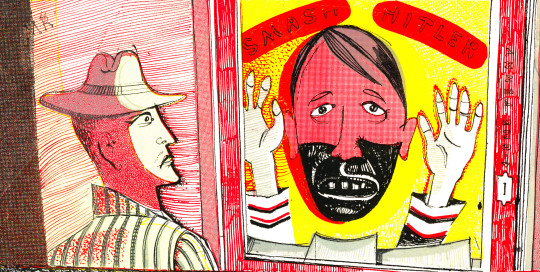
Further, Sports Gardens are static non-itinerant in contrast to the transience of the village fair, with its attendant sense of a momentary flowering for a single night. The knowledge that the show will be moving off somewhere tomorrow, that it will always be moving off somewhere gives the fair a quality of poignancy, of romance, which the Sports Garden entirely lacks.
So Gardens are harsh without being romantic; harsh, noisy and garish. Swing is laid on from 11am when they open to 12pm when they close. The typical pattern has a frontage of perhaps twenty feet, and runs straight back from the street. Pin-tables, wall-machines and cranes are ranged at either side: peep-shows are placed at the far end to give greater privacy. But in all Sports Gardens pin-tables and cranes are the largest profit makers, the serious business end of the industry. Hence these two types of machine are placed nearest the entrance in the largest numbers possible.
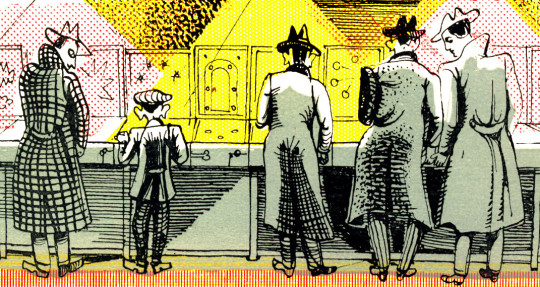
At the entrance to the Coventry Street saloon in London, for example, stands a large grab. A grab consists of a revolving table spread with the cheaper forms of ‘swag’: cigarettes, trinkets, powder-compacts, lighters-above which four shining chromium hands are poised. Aggressive in shape and predatory in gesture, these clutching silver fists are oddly symbolic of this tough, profitable branch of the entertainment catering business. Though in fairness to the management it should be noticed that earnings come chiefly from regular customers, fully aware of the small return received on outlay and not from the larger, more gullible crowd of casual visitors. Three or four shillings spent on the pintables may bring a few cigarettes: six or seven shillings on the cranes – a packet of Players. At the tables a maximum score earns a prize of two cigarettes.
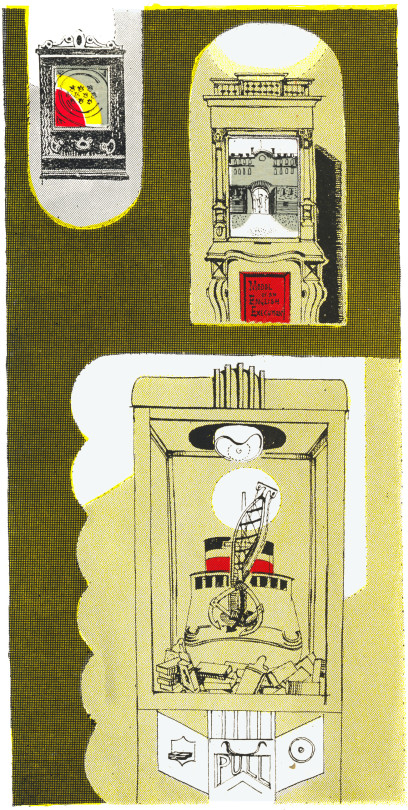
Now the original cost of these machines was about £25, so it looks as if the profits must be very large indeed. The pin-tables themselves, all of American origin, are marked Daval Manufacturing Coy. Chicago. Importations stopped in 1939. Since no other country is able to produce machines of competitive quality, Sports Gardens carry equipment at least nine years old. But the machines are Cheap and easy to maintain: the brightly figured surfaces are all washable and the well-made ingenious machinery inside runs without undue need of repair.
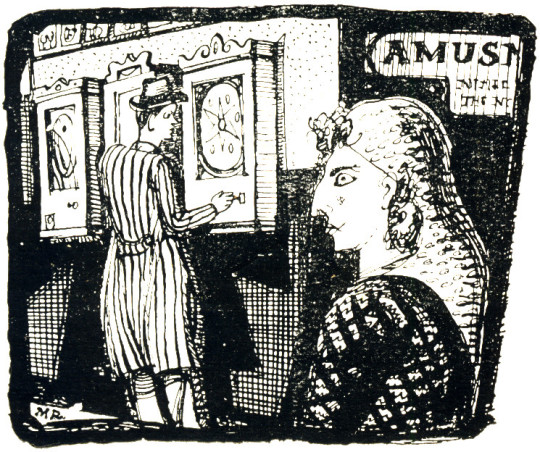
There are, perhaps, twenty-five standard types of table. The numerals on the distinctive backplates are interspersed with pictures of cigar-shaped racing cars zooming along concrete autobahns, pink and blue skyscrapers, giant vermillion aeroplanes with all the faked-up, streamlined paraphernalia of the Futurist city associated with American boys’ magazines.
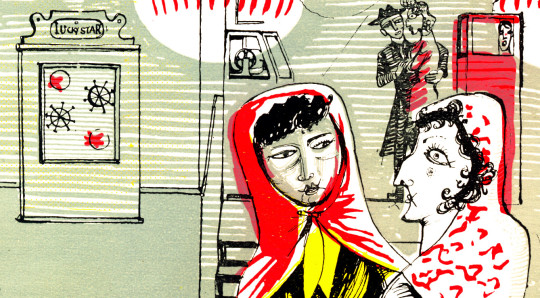
As one releases the piston, the chromium ball kicks up the shoot, ricocheting from point to point touching off electric buzzers, lighting groups of coloured bulbs, while automatic calculators flash out rapidly mounting scores.
To register winning scores, it is necessary to know how hard to pull back the spring piston, when to jog the table. In a limited sense, then an element of skill does exist, though the scales are heavily weighted in favour of the machine. Rarely does a customer succeed in beating the hazards. When he does however the management count it good advertisement the ‘punter’ pulling in packet after packet of cigarettes, incites the crowd to spend sums far in excess of any temporary loss.
Regular customers are of many types but of only one sex-male. A mixed age-group, very young to middle-aged they return day after day to play a particular table. Many are prosperous; ten shillings is a not unusual sum to spend on each visit. Business men wearing soft hats of emphatic curve, carrying bulky pigskin briefcases, often play the tables in pairs during the lunch hour.
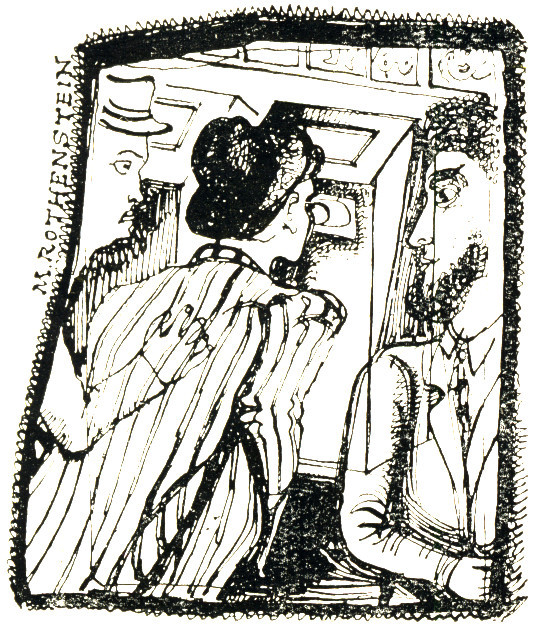
The peep-show, a non-scoring game of mechanism Peeping Tom has also an exclusively masculine following. A penny is placed in the aperture of the ‘Muto-scope’ or ‘Butiviewer’ and one peers down a black eyepiece at a miniature motion picture of a girl caught, as a rule, in protracted dalliance, wearing only her wrap or underclothes; a clothed male may also appear, the sleek young-middle aged shop walker type, sometimes dressed in Turkish costume.
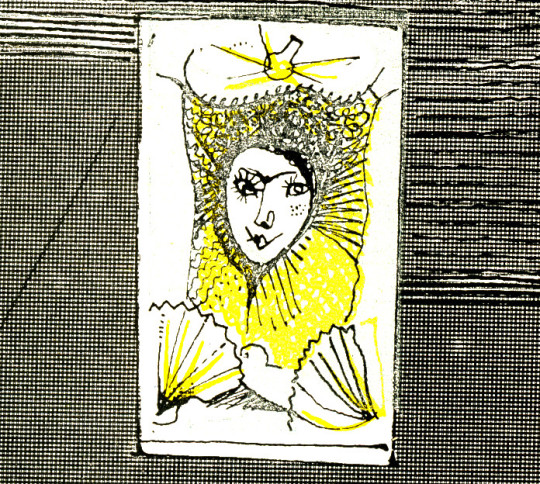
The sequence of pictures shown within is advertised by a ‘still’ bearing the expected caption: ‘Paris Nights’, ‘Sunbathing’, ‘Parasol Polly’, ‘A Pair of Queens’. Some are old fashioned machines worked by hand. In this case stills of half-dressed chorus girls, of the 1920 type flick over as one turns the handle. The pictures are illuminated in flashes, so the viewer’s eye holes shine yellow at one moment and are deeply shadowed the next.

The attendants are an essentially urban type, matey, good-humoured and nervy having a predilection for flashy up-to-dateness. This makes them touchingly proud of the little modern equipment they possess. Many of the older types of installation have great visual charm with their fussy grandfather clock appearance and elaborately erratic machinery ticking over within.

For these or other attractions single customers are apt to have a furtive look. They twist their mouths at you a bit sheepishly as they crane their necks to the peepshow eyepiece. But practised in groups, these penny pastimes take a more wholehearted and genial turn; and there is much geniality in the hours of peak attendance – rainy Sunday afternoons or evenings towards the week-end.
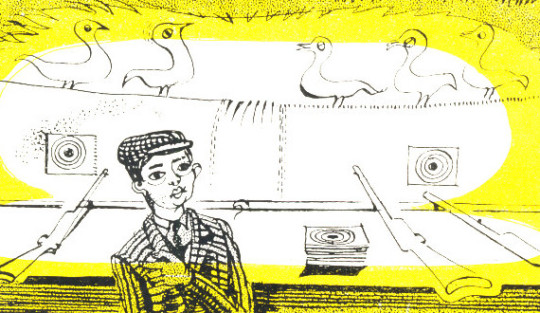
There is a sense of motion, vitality, quick-fire humour and attractively sharp colour, which contrasts not unfavourably with the stretched-out monotony of the scene outside. The Sports Garden entrance cuts a yellow hole in the black forbidding frontage of the night streets; beyond it we catch sight of the mysteriously welcome dazzle of coloured lights and animated crowds; while relayed Swing music, throbbing rather pleasantly down the empty street, thumps quietly at our ears.
